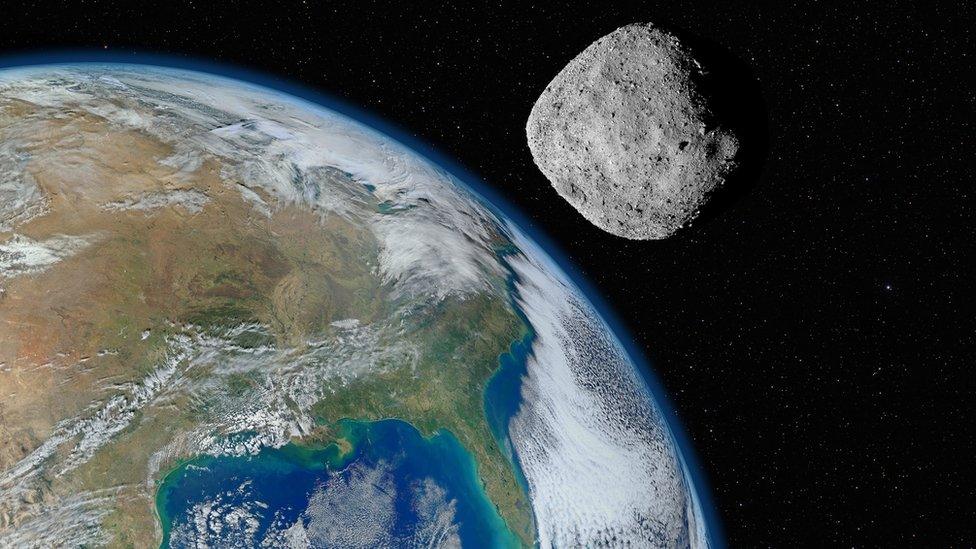Asteroids: Nasa say closest space rock to pass Earth for next 200 years is on its way
- Published
- comments

This illustration shows an asteroid flying past Earth - the 7482 (1994 PC1) asteroid will be a lot smaller and further away.
An asteroid around a kilometre wide is expected to fly past Earth on Tuesday 18 January - but don't worry - it's still going to be at a safe distance away!
It's expected to pass within 1.2 million miles (almost 2 million km) of the planet so there's no danger to us.
However, experts at NASA say it will be the closest an asteroid will come for the next 200 years.
It is said to be bigger than any building on Earth and is expected to fly past at just over 47,000 miles per hour.
This 2019 view of asteroid Bennu in 2019, showing it ejecting particles from its surface was created by combining two images taken by the NavCam 1 imager aboard NASA's OSIRIS-REx spacecraft
The team of scientists at NASA's Center for Near Earth Object Studies, who track "small bodies" such as asteroids, comets and dwarf planets, first discovered the space rock in 1994, and named it 7482 (1994 PC1).
It is unlikely to be visible without a telescope but if you have access to one, you may be able to spot it around 21:51 GMT on Tuesday evening.
How often do asteroids fly past Earth?
How do we change an asteroids course? (2017)
The simple answer, is "all the time"! An asteroid wider than Big Ben is tall is passing by Earth right now.
The 104 metre-wide space rock, which Nasa call Asteroid 2013 YD48, will come within 3.48 million miles of our planet as it whizzes through space.
There are no asteroids in existence that currently pose a threat to Earth, but Nasa are getting ready just in case.
They even have a mission in space at the moment called DART - which aims to try out diverting an asteroid by crashing into it!
Other small asteroids a few meters in size are detected passing between Earth and the Moon's orbit several times a month.
Tiny meteoroid fragments enter Earth's atmosphere several times a day and even land on the ground.
- Published9 January 2022
- Published11 January 2022
